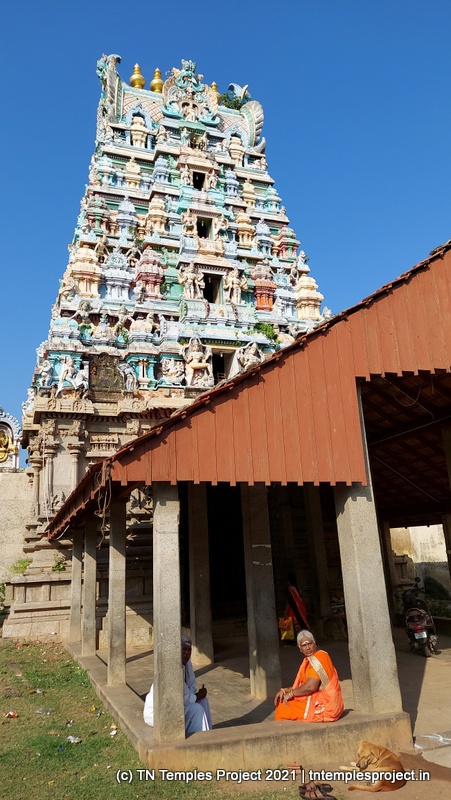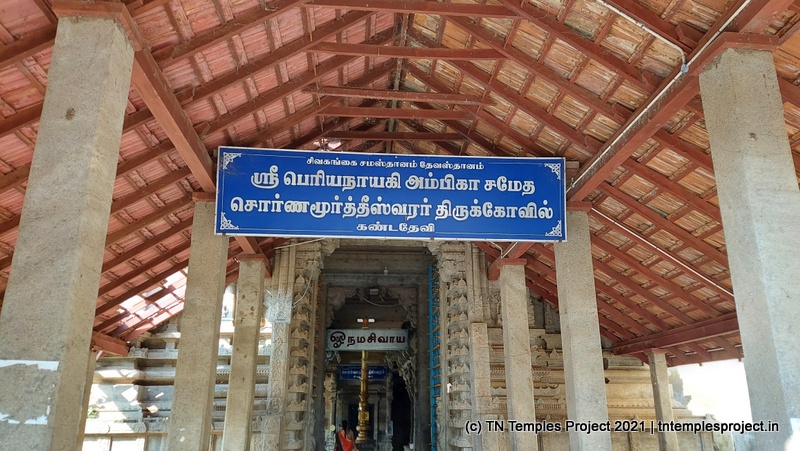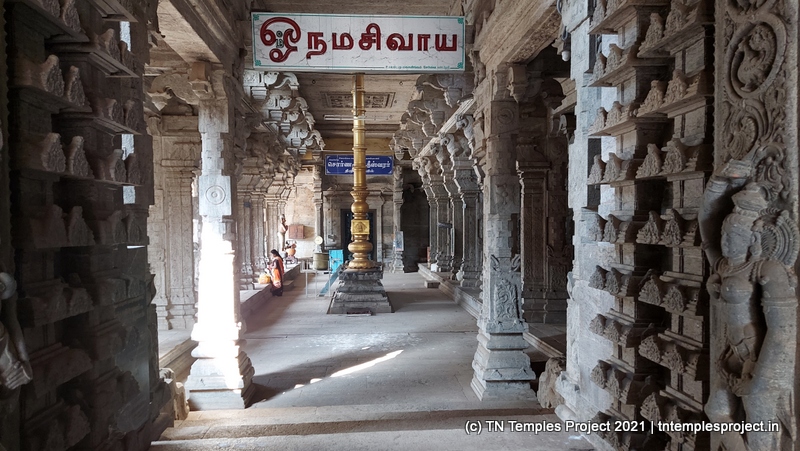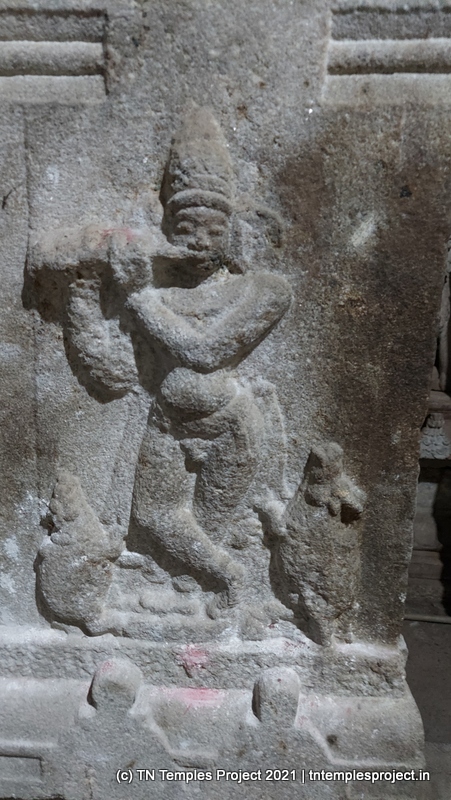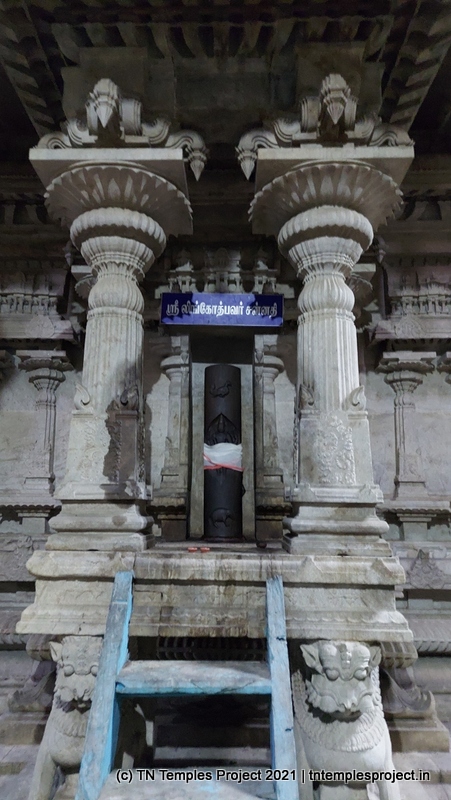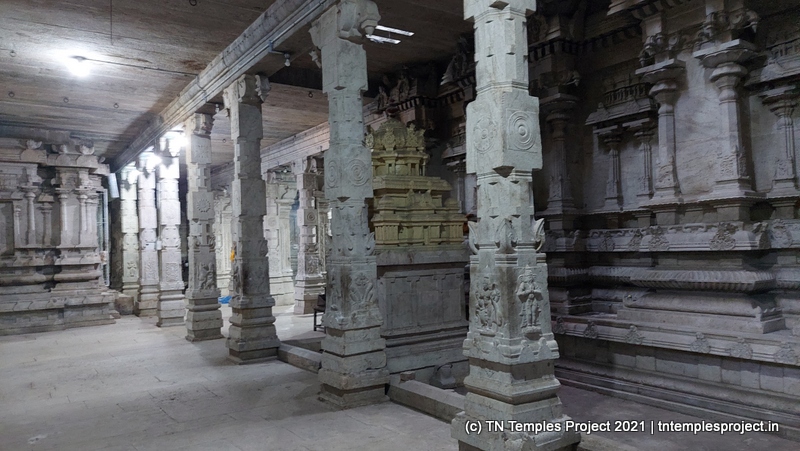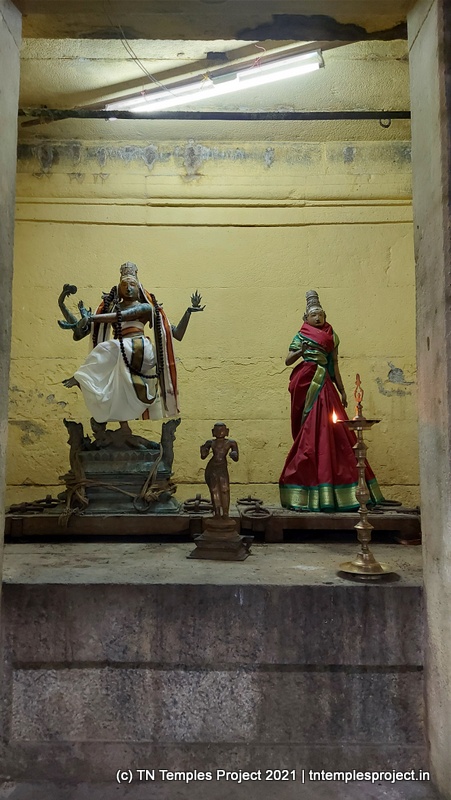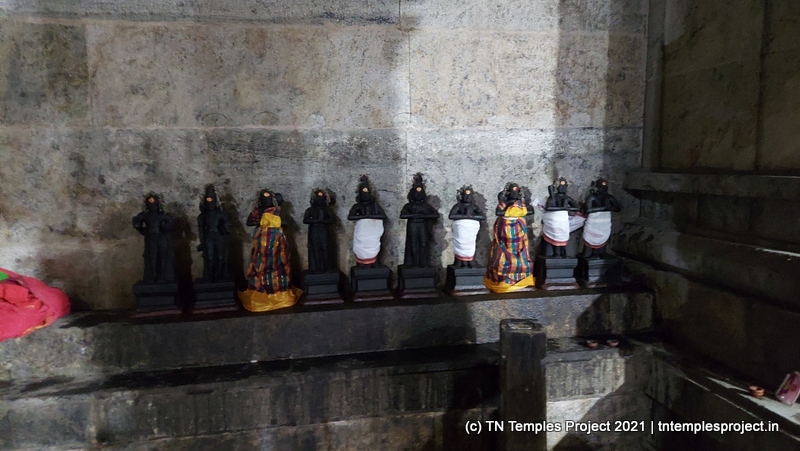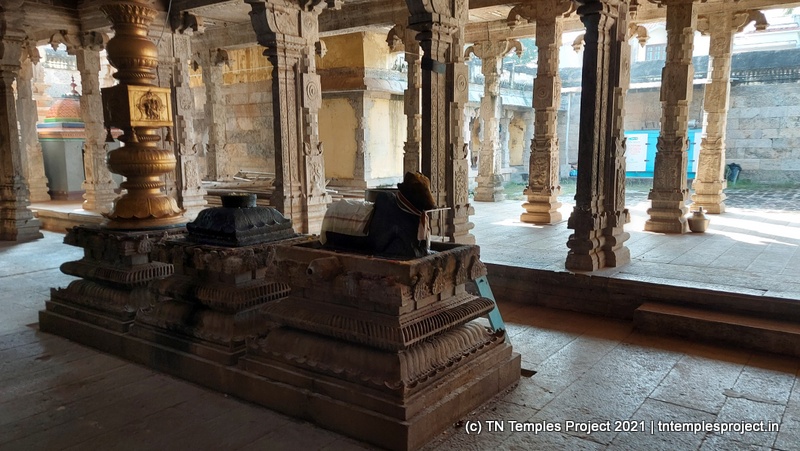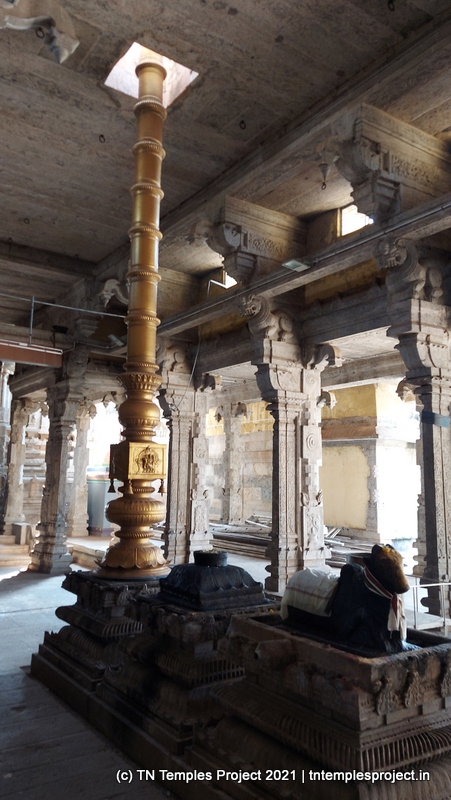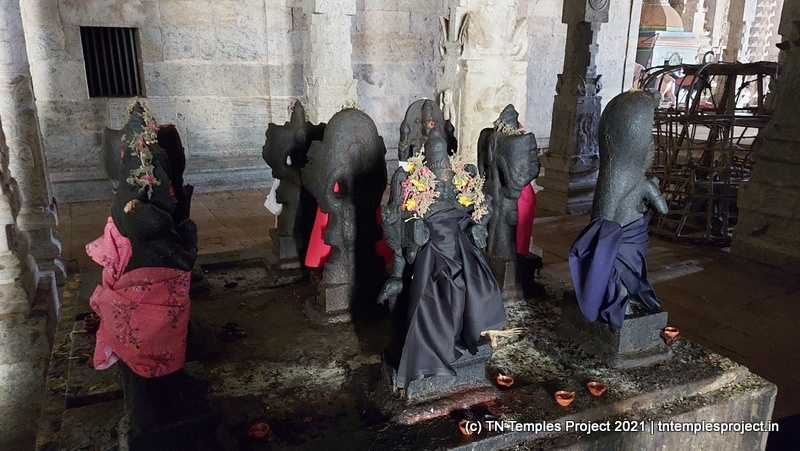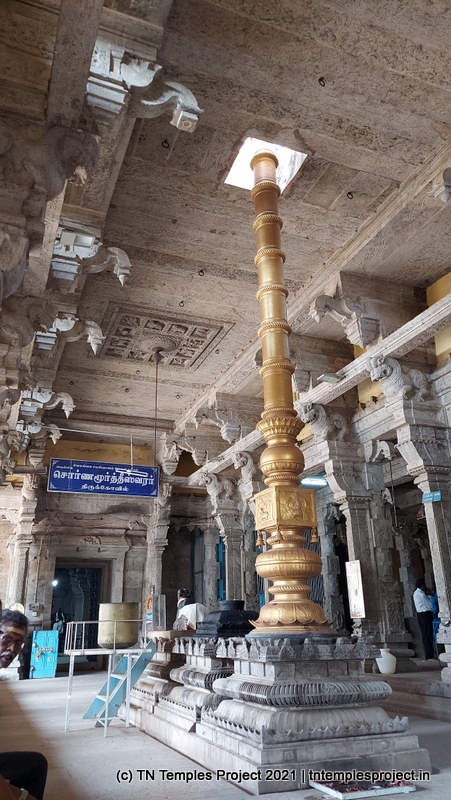Basic information about the temple
| Moolavar: | Swarnamurtheeswarar | Ambal / Thayar: | Periya Nayaki |
| Deity: | Siva | Historical name: | Kanden Deviyai |
| Vriksham: | Teertham: | Jatayu Teertham | |
| Agamam: | Age (years): | ||
| Timing: | 6 to 12 & 4 to 8 | Parikaram: | |
| Temple group: | – | ||
| Sung by: | Temple set: | ||
| Navagraham: | Nakshatram: | ||
| City / town: | Kandadevi | District: | Sivaganga |
| Maps from (click): | Current location | Karaikudi (15 km) | Pudukkottai (55 km) |
| Ramanathapuram (85 km) | Madurai (98 km) |
Location
Sthala puranam and temple information

Kandadevi is located very close to Devakottai, along with places like Iraguseri (which we will come to shortly).
The name Kandadevi is a modern-day corruption of Kanden Deviyai, meaning “I saw the Goddess”. What Goddess this could refer to? It turns out that this is dealt with in the sthala puranam of the temple, and is connected with the Ramayanam.
At one time, this place was a forest, in which Jatayu, the king of vultures in the Ramayanam, lived. When Sita was abducted by Ravana, Jayatu tried to stop their progress and valiantly fought Ravana, but after his wings were cut, he fell here, holding his breath until such time Rama passed this way. When Rama came here searching for Sita, Jayatu informed Rama that he had seen Sita – and hence, Kanden Deviyai.
The original temple here is said to have been for Siva as Siragilinathar (or possibly Siragizha Nathar), referring to the Lord of one who lost (ili / izha) his wings (siragu), referring to Jatayu.
According to another story which supposedly explains the etymology of Kandadevi, this is where Hanuman, after returning from Lanka, informed Rama that he had seen Sita (and hence, Kanden Deviyai). However, given the greater propensity of stories of this region being connected with Jatayu, the earlier name of Siva at this temple, and the temple’s Teertham being named Jatayu Teertham, the Jatayu story seems more appropriate / plausible.
The nearby Iraguseri also is a corruption of Iragu-Sari – where the wings (iragu / irakkai) fell (sari) – referring to Jatayu’s wings being cut off. There are several stories from the Ramayanam that are connected with the region from Vaitheeswaran Koil near Mayiladuthurai (where, incidentally, there is also a Jatayu Teertham, where Siva is said to have performed the last rites of Jatayu), nearby Iraguseri, several places on the coastline such as Vedaranyam, Marungur and Teerthandathanam, going all the way south up to Rameswaram.
There is also a puranam on how Siva came to be known by His current name here, of Swarna Moortheswarar. The king of the region was very pious and worked for his people, and wished to build a proper temple for Siragilinathar, but lacked funds. So, he took two businessmen with him, on a visit to the merchants of the region, to help collect the money required. When they came near this place, all three of them stumbled and fell to the ground at the same time. Realising that this was quite unusual, the king had the ground dug, and found not just a Siva Lingam, but several pots of gold and precious stones. Clearly recognising the indications, the king had a temple built with these gems and gold, and installed the Lingam as well.
Though the core temple is extremely ancient, the structural temple today is the result of several renovations and refurbishments in the last 400 years or so. There are some vestiges left, of a late Pandya (perhaps 14th century) influence in some aspects of the temple, today. The temple is maintained by Sivaganga Samasthanam Devasthanam

The temple’s entrance is through a majestic 5-tiered raja gopuram, in front of which is a small outer mandapam with a tin roof, serving as a waiting area at the entrance. A tall dhwajasthambam, bali peetham and Nandi follow. To the right on this corridor before the maha mandapam, is the Amman shrine.
Usually, Nandi’s face is turned slightly to the right, enabling him to view both Siva and Parvati at the same time. Here, the interesting element in the main mandapam is that the Nandi in front of the Siva Lingam faces slightly to the left, but there is no Amman shrine there. It is possible that in the centuries before the temple’s renovation (or even at the time this was the temple for Siragilinathar), Amman’s shrine was adjacent to the garbhagriham. Of course, this is not to suggest that the vigraham of Nandi is the same here since then, but the same depiction could have been employed.
In the koshtam are the usual shrines for Nardhana Vinayakar, Dakshinamurti, Lingodhbhavar, Brahma and Durga. In the prakaram are Vinayakar, Kasi Viswanathar and Visalakshi, Murugan, Gajalakshmi, Chandikeswarar, Sapta Matrikas, Bhairavar, Chandran and Suryan. There is a separate Navagraham shrine and Natarajar sabhai on the northern side.
The architecture at this classic Chettinadu temple is quite contemporary and very elegant, and clearly shows significant Nagarathar influence.
Other information for your visit
Contact
Phone: 94439 56357
Gallery
